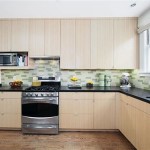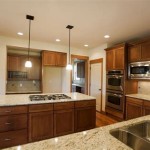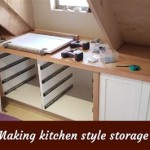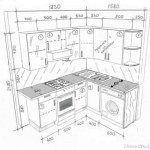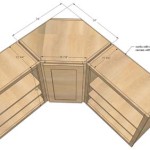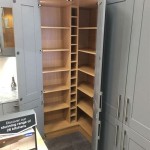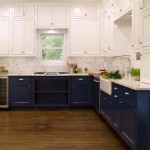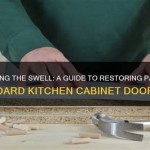Ontario Kitchen Cabinets: A Guide to Selection and Installation
Kitchen cabinets are a foundational element of any kitchen design, offering both storage solutions and aesthetic appeal. In Ontario, where homes range from historic to contemporary, the selection of appropriate kitchen cabinets requires careful consideration of several factors, including style, materials, functionality, and budget. This article provides a comprehensive guide to navigating the world of Ontario kitchen cabinets, covering topics from understanding different cabinet types to planning for installation.
The Ontario kitchen cabinet market is diverse, catering to a wide range of tastes and needs. Local manufacturers, alongside national and international brands, offer a plethora of options, ensuring that homeowners can find cabinets that perfectly complement their existing décor and lifestyle. Whether embarking on a complete kitchen renovation or simply replacing outdated cabinets, understanding the available choices is crucial for a successful project.
Understanding Cabinet Types
Kitchen cabinets are broadly classified into three main types: stock, semi-custom, and custom. Each type offers varying degrees of flexibility, quality, and price, making it essential to understand their nuances before making a selection.
Stock Cabinets: Stock cabinets are pre-made and readily available in standard sizes and finishes. These are the most affordable option and are ideal for budget-conscious homeowners or those seeking a quick turnaround. They are typically found at large home improvement retailers and are a good choice for smaller kitchens or spaces with standard dimensions. The limitations of stock cabinets lie in their limited customization options. Standard sizes might not perfectly fit every kitchen layout, potentially leading to design compromises. Furthermore, the selection of styles and finishes is usually restricted compared to semi-custom or custom options.
Semi-Custom Cabinets: Semi-custom cabinets offer a balance between affordability and customization. While still based on standard sizes, they provide more flexibility in terms of modifications and finishes. This allows homeowners to tailor the cabinets to their specific needs and preferences. For instance, the depth of a cabinet might be adjusted, or a specific door style or hardware option might be chosen. Semi-custom cabinets are often a good choice for homeowners who want a more personalized look without the high cost of custom cabinetry. They allow for greater design flexibility and can accommodate unique kitchen features or storage requirements.
Custom Cabinets: Custom cabinets are built to order, offering complete control over every aspect of the design. From size and shape to materials and finishes, custom cabinets are tailored to the homeowner's exact specifications. This is the most expensive option but provides unparalleled design flexibility and allows for the creation of truly unique and personalized kitchens. Custom cabinets are often fabricated by local cabinet makers and are ideal for kitchens with unusual layouts, specific storage needs, or homeowners seeking a high-end, bespoke aesthetic. The process typically involves detailed consultations, precise measurements, and careful craftsmanship.
Choosing the Right Materials
The materials used in kitchen cabinets significantly impact their durability, appearance, and cost. Common materials include wood, plywood, particleboard, MDF (Medium-Density Fiberboard), and stainless steel. Understanding the properties of each material is crucial for making an informed decision.
Wood: Solid wood cabinets are known for their beauty, durability, and natural grain patterns. Popular wood choices include maple, oak, cherry, and birch. Each wood species has its own unique color and grain characteristics, allowing for a wide range of aesthetic possibilities. Hardwoods like maple and oak are particularly durable and resistant to dents and scratches. However, solid wood cabinets are generally more expensive than cabinets made from other materials and can be susceptible to changes in humidity, potentially leading to warping or cracking. Proper sealing and finishing are essential to protect wood cabinets from moisture damage.
Plywood: Plywood is an engineered wood product made by layering thin sheets of wood veneer and bonding them together with adhesive. It is a strong and stable material that is less prone to warping or cracking than solid wood. Plywood is often used for cabinet boxes and shelving because of its dimensional stability and resistance to moisture. High-quality plywood can be a more cost-effective alternative to solid wood, offering similar durability and performance.
Particleboard: Particleboard is another engineered wood product made from wood chips and resin. It is a less expensive alternative to plywood and solid wood but is also less durable and more susceptible to moisture damage. Particleboard is often used for cabinet boxes in budget-friendly stock cabinets. It is important to note that particleboard can expand and crumble if exposed to water, so it is not recommended for areas prone to moisture, such as under the sink. Careful sealing and finishing can help to improve its moisture resistance.
MDF (Medium-Density Fiberboard): MDF is a dense and smooth engineered wood product made from wood fibers and resin. It is often used for cabinet doors and drawer fronts because of its smooth surface and ability to be easily painted or laminated. MDF is more stable than particleboard and less prone to warping, but it is still susceptible to moisture damage. Like particleboard, MDF should be properly sealed and finished to protect it from water.
Stainless Steel: Stainless steel cabinets are often found in commercial kitchens but are also gaining popularity in modern residential kitchens. They are extremely durable, hygienic, and easy to clean. Stainless steel is resistant to rust, corrosion, and stains, making it a practical choice for busy kitchens. However, stainless steel cabinets can be more expensive than wood cabinets and may require special cleaning products to maintain their shine. They also tend to show fingerprints and smudges more easily.
Planning for Installation and Cost Considerations
The installation of kitchen cabinets is a critical step in the renovation process. Proper installation ensures that the cabinets are level, secure, and functional. The cost of kitchen cabinets varies widely depending on the type of cabinet, materials used, and the complexity of the installation.
DIY vs. Professional Installation: Homeowners can choose to install cabinets themselves (DIY) or hire a professional installer. DIY installation can save money, but it requires significant carpentry skills and tools. Incorrect installation can lead to problems such as uneven cabinets, misaligned doors, and structural instability. Professional installers have the experience and expertise to ensure that cabinets are installed correctly and efficiently. They can also handle any unexpected challenges that may arise during the installation process. The cost of professional installation typically ranges from 10% to 20% of the total cabinet cost.
Measuring and Planning: Accurate measurements are essential for ordering the correct size and quantity of cabinets. It is crucial to measure the kitchen space precisely, taking into account any obstacles such as pipes, windows, and doorways. Creating a detailed kitchen plan with accurate measurements will help to avoid costly mistakes. Many cabinet retailers offer design services to assist homeowners with planning their kitchen layout and selecting the appropriate cabinets.
Cost Considerations: The cost of kitchen cabinets can vary significantly depending on the type of cabinet, materials used, and the complexity of the design. Stock cabinets are generally the most affordable option, while custom cabinets are the most expensive. The cost of materials also plays a significant role, with solid wood cabinets typically costing more than cabinets made from plywood or particleboard. Installation costs should also be factored into the overall budget. Obtaining multiple quotes from different cabinet retailers and installers is recommended to ensure a competitive price.
Beyond the Basics: Finishes, Hardware & Accessories
Selecting the right finish is crucial for both the aesthetic and protective qualities of your Ontario kitchen cabinets. Finishes range from natural stains that showcase the wood grain to painted options offering a wider spectrum of colors. Consider the overall style of your kitchen and the amount of wear and tear the cabinets will endure. Durable finishes like catalyzed conversion varnish provide excellent resistance to moisture, scratches, and chemicals.
Hardware, including knobs, pulls, and hinges, is often considered the jewelry of the kitchen. These small details can significantly impact the overall look and feel. From sleek and modern stainless steel pulls to classic and ornate knobs, choose hardware that complements the cabinet style and your personal preferences. Ensure the hardware is durable and comfortable to use.
Accessories can maximize the functionality and organization of your kitchen cabinets. Options include pull-out shelves, drawer dividers, spice racks, and trash can pull-outs. Carefully consider your storage needs and incorporate accessories that will make your kitchen more efficient and user-friendly.
Ontario Specific Considerations: Climate & Style
Ontario's climate, with its hot summers and cold winters, can impact the stability of wood cabinets. Changes in humidity can cause wood to expand and contract, potentially leading to warping or cracking. Choosing kiln-dried lumber and applying a durable finish can help to mitigate these effects. Proper ventilation in the kitchen can also help to regulate humidity levels.
The architectural style of your Ontario home should also influence your cabinet selection. In older homes, traditional cabinet styles with raised panel doors and ornate details might be more appropriate. In modern homes, sleek and minimalist cabinets with flat panel doors and clean lines might be a better fit. Consider the overall aesthetic of your home and choose cabinets that complement the existing décor.
Navigating the complexities of Ontario kitchen cabinets involves weighing options across type, material, installation approaches and budget. A well informed homeowner can effectively select options that optimally blend functionality, aesthetics, and long-term value.

Kitchen Cabinets Thornhill Ontario Castle Kitchens

Kitchen Cabinets Sudbury Innovative Kitchens By Design

Azule Kitchens 8 Diffe Types Of Kitchen Cabinets You Will Love

Maple Ontario Kitchen Cabinet Painting Refinishing

Kitchen Cabinets Maker In Aurora Newmarket Ontario Castle Kitchens

Kitchen Cabinets Vaughan Renovations In Ontario Cozyhome

Kitchen Cabinetry Manufacturers Toronto Ontario Cabinets Suppliers

Top 7 Kitchen Cabinet Manufacturers In Ontario

Custom Kitchen Cabinets Woodbridge Ontario Castle Kitchens

Canadian Made Kitchen Cabinets In Oakville Ontario Castle Kitchens
Related Posts

